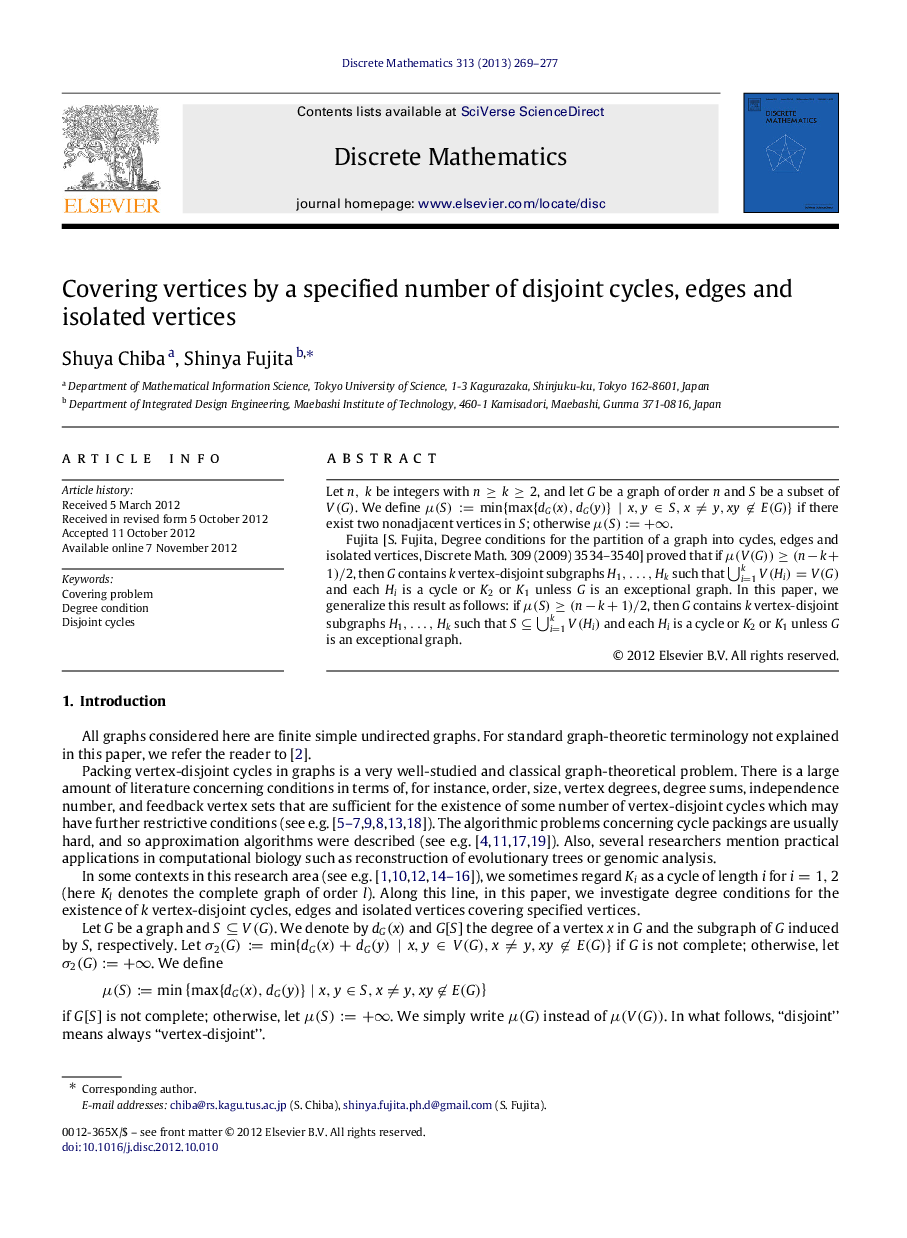| Article ID | Journal | Published Year | Pages | File Type |
|---|---|---|---|---|
| 4647614 | Discrete Mathematics | 2013 | 9 Pages |
Let n,k be integers with n≥k≥2n≥k≥2, and let GG be a graph of order nn and SS be a subset of V(G)V(G). We define μ(S):=min{max{dG(x),dG(y)}∣x,y∈S,x≠y,xy∉E(G)}μ(S):=min{max{dG(x),dG(y)}∣x,y∈S,x≠y,xy∉E(G)} if there exist two nonadjacent vertices in SS; otherwise μ(S):=+∞μ(S):=+∞.Fujita [S. Fujita, Degree conditions for the partition of a graph into cycles, edges and isolated vertices, Discrete Math. 309 (2009) 3534–3540] proved that if μ(V(G))≥(n−k+1)/2μ(V(G))≥(n−k+1)/2, then GG contains kk vertex-disjoint subgraphs H1,…,HkH1,…,Hk such that ⋃i=1kV(Hi)=V(G) and each HiHi is a cycle or K2K2 or K1K1 unless GG is an exceptional graph. In this paper, we generalize this result as follows: if μ(S)≥(n−k+1)/2μ(S)≥(n−k+1)/2, then GG contains kk vertex-disjoint subgraphs H1,…,HkH1,…,Hk such that S⊆⋃i=1kV(Hi) and each HiHi is a cycle or K2K2 or K1K1 unless GG is an exceptional graph.
